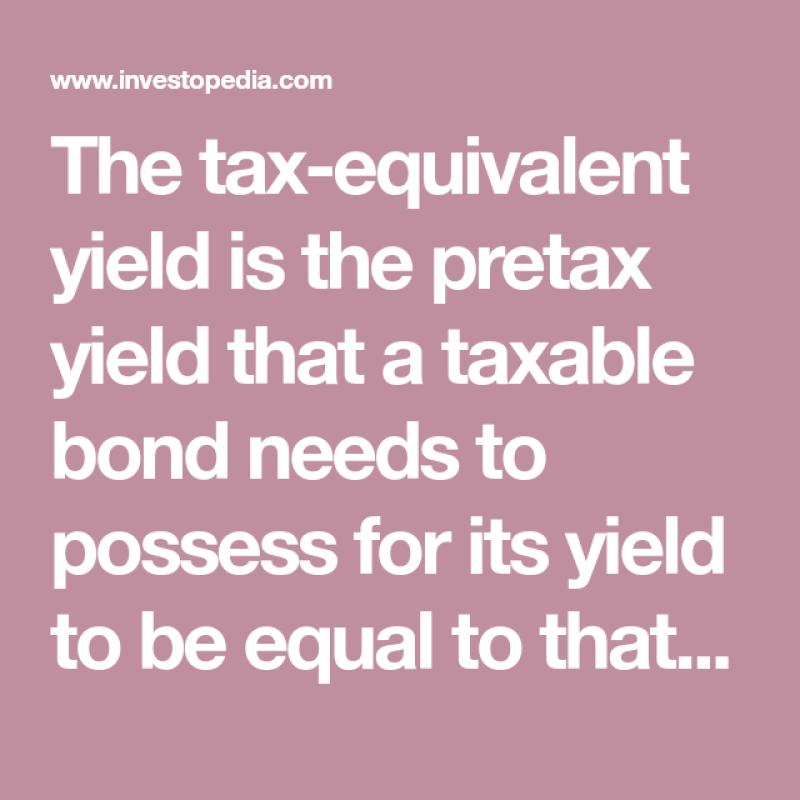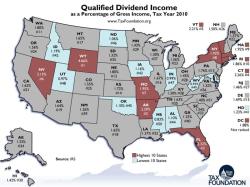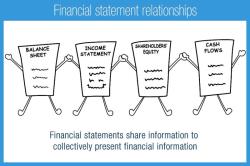What is an equivalent taxable yield?
The equivalent taxable yield, also known as the tax-equivalent yield, is a financial metric used to compare the after-tax yield of a tax-free investment with the yield of a taxable investment. It helps investors make informed decisions by considering the impact of taxes on investment returns.
Here's how to calculate the equivalent taxable yield:
Where:
- Tax-Free Yield: The yield or interest rate of a tax-free investment, such as municipal bonds. This is the rate of return before accounting for taxes.
- Tax Rate: The investor's marginal tax rate. It represents the percentage of income that is paid in taxes.
The formula adjusts the tax-free yield by dividing it by the complement of the tax rate (1 - Tax Rate). This adjustment accounts for the fact that the interest earned on the tax-free investment is not subject to income taxes, providing a tax advantage compared to taxable investments.
Example:
Let's say you have a tax-free investment with a yield of 4% and your marginal tax rate is 25%. The equivalent taxable yield would be:
In this example, the equivalent taxable yield is 5.33%, which means a taxable investment with a yield of 5.33% would be needed to match the after-tax return of the tax-free investment.
Investors use the equivalent taxable yield to compare the attractiveness of tax-free and taxable investments, especially when considering fixed-income securities like bonds. Municipal bonds, for instance, are often tax-free at the federal level and sometimes at the state or local level, making their yields more attractive for investors in higher tax brackets.
It's important to note that the equivalent taxable yield is a useful tool for comparing investments, but other factors such as risk, liquidity, and investment goals should also be considered when making investment decisions. Additionally, tax laws and individual circumstances can vary, so investors should consult with a financial advisor for personalized advice.
What is an equivalent taxable yield, and how is it calculated?
The equivalent taxable yield (ETY) is the yield that a taxable investment would need to have in order to generate the same after-tax return as a tax-exempt investment. The ETY is calculated using the following formula:
ETY = Nominal yield / (1 - Tax rate)
where:
- Nominal yield is the yield of the tax-exempt investment.
- Tax rate is the investor's marginal tax rate.
How does an equivalent taxable yield differ from the nominal yield, and what factors influence its calculation?
The nominal yield is the yield of the investment before taxes. The equivalent taxable yield is the yield of the investment after taxes. The main factor that influences the calculation of the ETY is the investor's marginal tax rate. The higher the investor's tax rate, the higher the ETY will be.
Are there examples or scenarios illustrating the concept of equivalent taxable yield?
Here is an example to illustrate the concept of equivalent taxable yield:
Suppose an investor is considering investing in a municipal bond with a nominal yield of 5%. The investor's marginal tax rate is 25%. The ETY of the municipal bond would be calculated as follows:
ETY = 5% / (1 - 25%) = 6.67%
This means that the investor would need to find a taxable investment with a yield of at least 6.67% in order to generate the same after-tax return as the municipal bond.
Another example:
Suppose an investor is considering investing in a corporate bond with a nominal yield of 7%. The investor's marginal tax rate is 35%. The ETY of the corporate bond would be calculated as follows:
ETY = 7% / (1 - 35%) = 10.77%
This means that the investor would need to find a taxable investment with a yield of at least 10.77% in order to generate the same after-tax return as the corporate bond.
Conclusion
The equivalent taxable yield is a useful tool for investors to compare the yields of taxable and tax-exempt investments. By understanding the ETY, investors can make more informed decisions about their investments.













